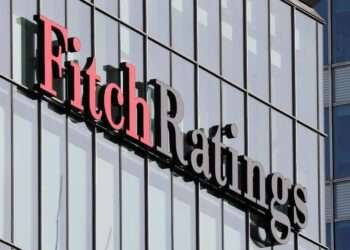Ghana’s fiscal performance in the first seven months of 2025 presented a mixed picture – a strong revenue growth tempered by missed targets.
According to the Bank of Ghana’s September 2025 Monetary Policy Report, total revenue and grants amounted to GH¢116.2 billion, representing 8.3% of GDP. This figure, however, fell short of the programmed target of GH¢122.9 billion (8.8% of GDP), a deficit of about GH¢6.7 billion or 5.5%.
Despite the shortfall, the report highlighted a significant year-on-year growth of 22.9% in total revenue and grants, indicating improved fiscal performance compared to the same period in 2024. This growth was driven largely by improvements in non-oil tax revenue, VAT collections, and domestic levies.
However, the government’s ambitious revenue mobilization target was undermined by the appreciation of the cedi, which weakened import-based tax collections, one of the key pillars of Ghana’s fiscal structure.
Cedi Appreciation Takes a Toll on Import Taxes
While the cedi’s appreciation brought relief to importers, debt managers, and consumers by reducing the cost of imported goods, it also had a downside as it eroded tax collections from import duties and related levies.
The report revealed that import duties fell short of target by GH¢1.9 billion, representing a 13.0% decline, primarily due to the lower-than-expected CIF (Cost, Insurance, and Freight) value of imports. The appreciation of the cedi meant that imported goods, when converted into local currency, were valued less, leading to smaller tax obligations.
Similarly, the import components of VAT, GETFund levy, and NHIL recorded declines of 3.8%, 4.6%, and 5.2%, respectively, below their targets. This broad-based decline in import-related tax lines underscores the dual-edged nature of currency strength — while it stabilizes prices and debt, it dampens fiscal receipts.

Economists have long argued that Ghana’s dependence on trade taxes makes its revenue performance highly sensitive to exchange rate movements. The 2025 experience reinforces that reality.
Domestic Taxes Cushion the Blow
Despite the setbacks from imports, domestic tax performance provided some relief to the revenue basket. The report showed that the domestic components of VAT, GETFund levy, and NHIL exceeded their targets by 2.2%, 14.0%, and 14.8%, respectively.
This impressive performance was attributed to higher consumption levels spurred by declining inflation and improved consumer confidence. As the cedi appreciated and price pressures eased, households and businesses increased spending, leading to higher domestic tax yields.
Additionally, corporate income tax collections outperformed expectations, exceeding the target by 2.8%, largely due to better-than-anticipated contributions from the mining and financial sectors. Conversely, PAYE underperformed by 3.5%, reflecting reduced payments from the mining sector — another consequence of the stronger cedi and its impact on export revenues.
Overall, non-oil tax revenue fell just 0.2% below target, signaling resilience in the domestic tax system despite the challenges from the external sector.
Government Maintains Strong Fiscal Discipline
Even as revenues underperformed, the government demonstrated commendable fiscal prudence. Expenditures were tightly managed, coming in 14.1% below the programmed target for the period. This strong control of spending helped offset the impact of the revenue shortfall.
The report noted that the primary balance on a commitment basis — the key fiscal anchor — recorded a surplus of 1.0% of GDP, surpassing the targeted surplus of 0.5% of GDP. This outcome reflects the administration’s commitment to restoring fiscal stability and building investor confidence under the ongoing IMF-supported program.
Analysts say the ability to maintain a surplus, despite lower-than-expected revenues, shows progress in Ghana’s fiscal consolidation efforts.
While the appreciation of the cedi negatively impacted import-based taxes, it offered significant benefits to Ghana’s debt profile. The report acknowledged that the significant appreciation of the cedi has reduced the debt burden and improved debt sustainability metrics.
A stronger local currency lowers the cedi value of external debt and interest payments, easing pressure on government finances. This has been a welcome development, particularly after the currency volatility and debt restructuring challenges of recent years.
The improved exchange rate environment also helped moderate inflation and stabilized macroeconomic expectations, a key ingredients for long-term fiscal health.
Balancing Growth with Fiscal Realities
The fiscal trends for the first seven months of 2025 highlight Ghana’s progress in revenue mobilization, expenditure control, and macroeconomic management. However, they also underscore the vulnerability of the revenue framework to exchange rate movements and external shocks.
To sustain fiscal stability, experts recommend broadening the domestic tax base, enhancing compliance, and reducing reliance on import-based taxes. The Ministry of Finance’s digitalization agenda and ongoing tax reforms could be critical in addressing these structural weaknesses.
As Ghana moves into the final quarter of 2025, policymakers will aim to consolidate the gains from cedi stability while strengthening revenue collection to meet year-end targets. The balance between maintaining a strong currency and ensuring robust tax receipts remains delicate — and will be pivotal in shaping Ghana’s fiscal outlook heading into 2026.
In all, the appreciation of the cedi has proven both a blessing and a burden, easing the debt load but trimming import-related revenues. Yet, with disciplined spending and sustained domestic tax efforts, Ghana’s fiscal path appears steadier, setting the stage for stronger economic recovery in the years ahead.
READ ALSO: Lower Interest Rates to Bite Deep into Ghanaian Banks’ Profit Margins – Fitch




















